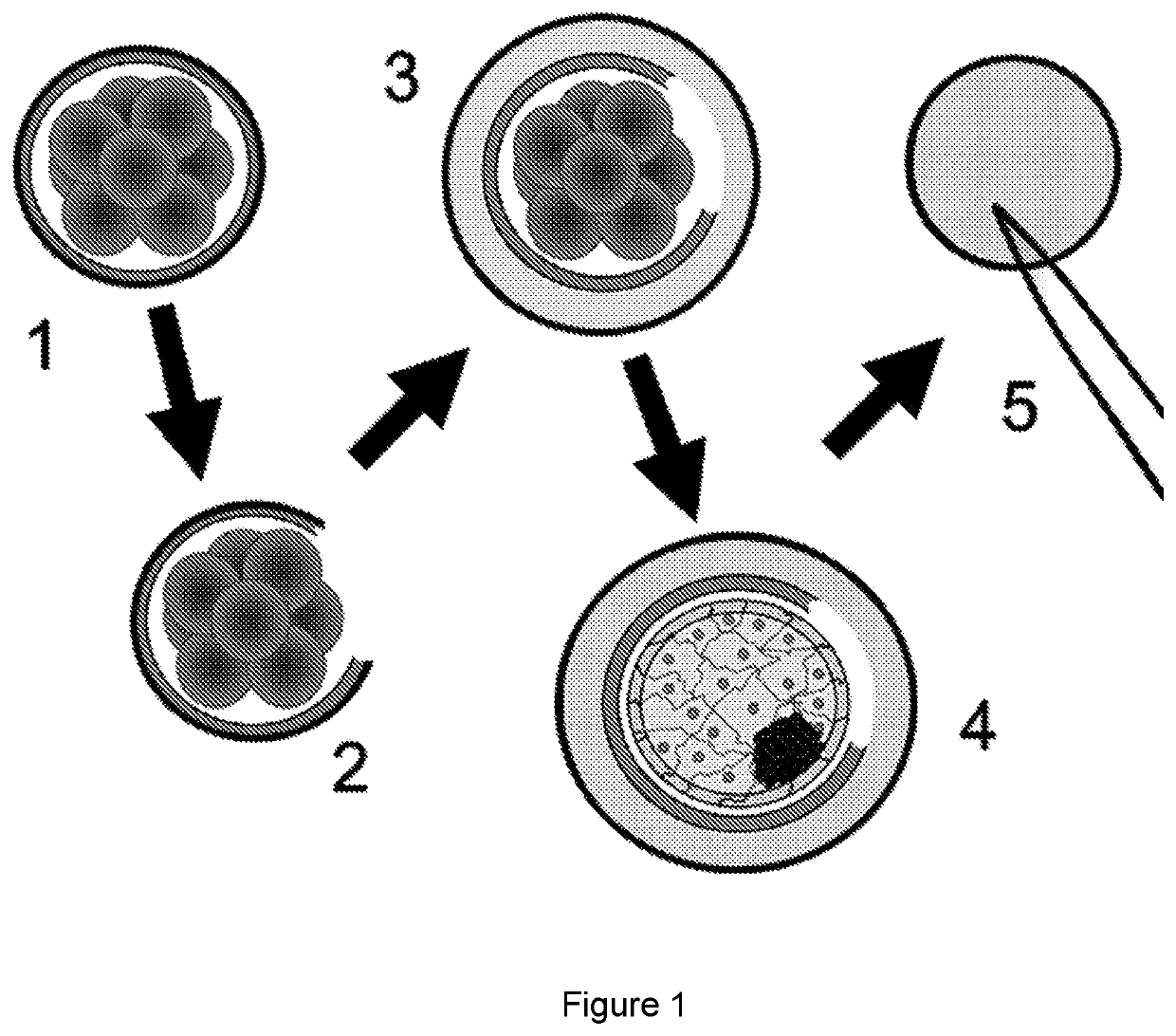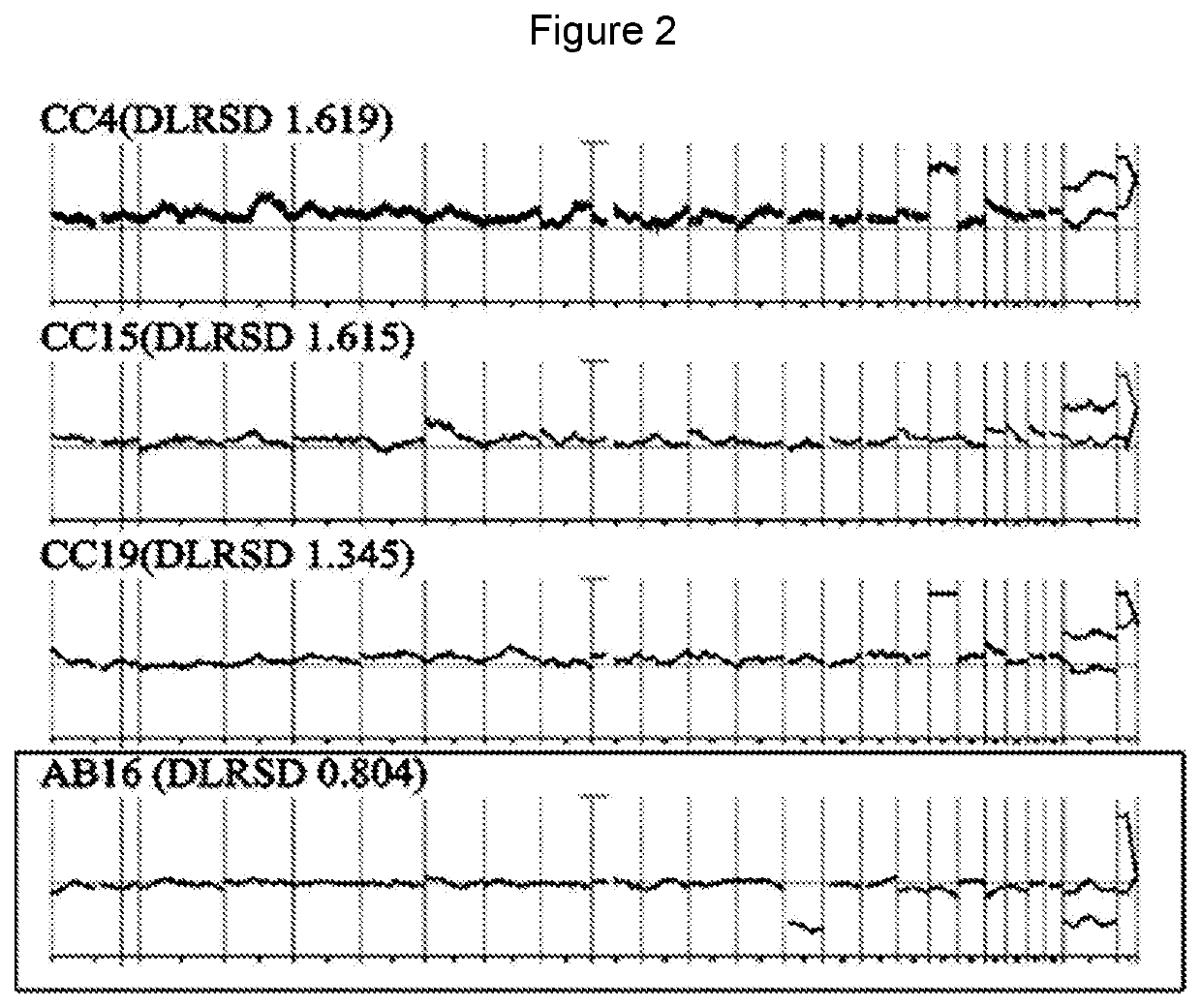Non-invasive preimplantation genetic screening
a pre-implantation and non-invasive technology, applied in the field of non-invasive pre-implantation genetic screening, can solve the problems of invasive and expensive biopsy process, and achieve the effect of reducing the risk of damage and optimizing the likelihood
- Summary
- Abstract
- Description
- Claims
- Application Information
AI Technical Summary
Benefits of technology
Problems solved by technology
Method used
Image
Examples
example 1
yonic DNA in Spent IVF Media
[0031]This Example demonstrates the presence of free embryonic DNA in spent media, with a PGS result concordant with trophectoderm biopsy. A prospective cohort analysis was used to assess if preimplantation genetic screening (PGS) is possible by testing for free embryonic DNA in spent IVF media from embryos undergoing trophectoderm biopsy. The study involved seven patients undergoing IVF in an academic fertility center with 57 embryos undergoing trophectoderm biopsy for PGS. On day 3 of development, each embryo was placed in a separate media droplet. All biopsied embryos received a PGS result via array comparative genomic hybridization (aCGH). PGS was performed on amplified DNA extracted from media and results were compared with PGS results for the corresponding biopsy. The main outcome measures included: 1) presence of DNA in spent IVF culture media, and correlation between genetic screening result from spent media and corresponding biopsy. Fifty five sa...
PUM
| Property | Measurement | Unit |
|---|---|---|
| volume | aaaaa | aaaaa |
| volume | aaaaa | aaaaa |
| volume | aaaaa | aaaaa |
Abstract
Description
Claims
Application Information
 Login to View More
Login to View More - R&D
- Intellectual Property
- Life Sciences
- Materials
- Tech Scout
- Unparalleled Data Quality
- Higher Quality Content
- 60% Fewer Hallucinations
Browse by: Latest US Patents, China's latest patents, Technical Efficacy Thesaurus, Application Domain, Technology Topic, Popular Technical Reports.
© 2025 PatSnap. All rights reserved.Legal|Privacy policy|Modern Slavery Act Transparency Statement|Sitemap|About US| Contact US: help@patsnap.com


